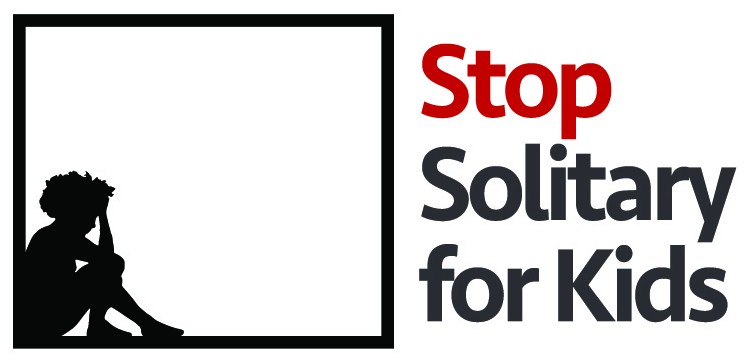There are a number of ways for attorneys to challenge solitary confinement. Read below to learn more about strategies for your practice, information about making your voice heard, and litigation.
ADVOCACY TOOLS
Project Witness Virtual Reality by Google: Google and the Campaign for the Fair Sentencing of Youth created a Virtual Reality (VR) Project Witness to create a immersive experience of children in solitary confinement. Project Witness can be used as a video, VR and augmented reality advocacy tool to bring awareness and support to ending solitary confinement. Learn more here.
Replica Solitary Confinement Cell: Several organizations, including the National Religious Campaign Against Torture (NRCAT) partner with advocates to construct a replica solitary cell. The goal of the replica cell give viewers a fraction of the real experience of solitary confinement. The replica has been used in legislative buildings and other public forums to support legislation, litigation, and to raise awareness on the harms of solitary. Learn more about NRCAT’s replica cell
RESOURCES
Not in Isolation: How to Reduce Room Confinement While Increasing Safety in Youth Facilities: This toolkit is a road map to help answer the question, “If not isolation, then what?” in ways that are developmentally appropriate and improve overall outcomes for kids. It tells the stories of how four jurisdictions reduced isolation without compromising staff or youth safety, including staff quotes and sample tools and policies. Advocates, policymakers, and other stakeholders can use the data and examples in the report to that ending solitary is possible.
Unlocking Youth: Legal Strategies to End Solitary Confinement in Juvenile Facilities: This report by the Juvenile Law Center uses surveys of public defenders, conversations with youth and families, interviews with correctional administrators, and legal and psychological research to fill these gaps and set forth recommendations for reform.
Vera’s Solitary Legislative Tracking Guide: The Vera Institute of Justice has created a document to track legislation on solitary confinement.
IN PRACTICE
File a motion to challenge solitary confinement. We have created a sample motion in partnership with the National Juvenile Defender Center.
Request data on the use of solitary confinement in state and local facilities that house youth. Reform work to end solitary confinement begins with a clear understanding of whether and how it is being used.
Talk to your clients. They are a key source of information about what is actually happening inside facilities. Contact us or check out the Unlocking Youth report from the Juvenile Law Center described above.
Rely on best practice standards such as the Juvenile Detention Alternative Initiative (JDAI) Facility Standards and JDAI Strategies to Reduce Unnecessary Room Confinement. Other standards, including the Performance-based Standards created by correctional professionals, also state that solitary confinement should only be used in emergency situations and should be brief and supervised. Include a list of professional organizations with strong positions against solitary confinement for youth. Cite the standards in your practice and familiarize judges and facilities with them. Increasingly, the use of solitary goes against the accepted professional judgment, practice, and standards in the juvenile justice field.
Rely on Federal Law
USE INFORMATION
Stay up to date about legislation, litigation, and developments in other states by reading our pages on Latest Developments, State Developments, Articles & Posts, and other tabs under the Resources Menu of this website.
Encourage facilities and stakeholders to adopt core strategies that have helped to reduce solitary confinement in other jurisdictions. If stakeholders are reluctant, find out clear reasons why. Attempting to address their particular concerns with data and examples from other states may help convince them. In many situations, facilities and staff are concerned that, without the threat of room confinement, youth will assault staff.
Use credible messengers. Both the Not in Isolation report (which includes a fact sheet for facility staff) and the Council of Juvenile Justice Administrators Toolkit on Reducing Isolation contain data and perspectives from facility leaders and staff that, when done strategically and carefully, reducing room confinement does not increase violence.
Connect facility staff and administrators with resources to reduce solitary and information that facilities in other jurisdictions have limited solitary without jeopardizing facility safety. Use the Not in Isolation report to show that facilities that reduce solitary confinement are actually safer for staff and youth.
Get judges invested in reducing solitary confinement. The National Council of Juvenile and Family Court Judges issued a resolution calling on judges to take an active roll in ending solitary confinement for youth and adopting a presumptive policy against the practice. Judges may be more likely to intervene if they consider solitary an abuse happening to youth on their watch or as a practice that prevents their court orders for youth to receive treatment, rehabilitation, and school.
BE HEARD
Contact us and tell us what’s happening in your area.
Raise awareness on social media using #StopSolitaryforKids and Fact Sheets and Toolkits, Infographics & Images.
Call State Legislators and Members of Congress and ask them to speak out against solitary confinement for kids and work to end the practice. You can use this sample call script and share it with clients and colleagues.
